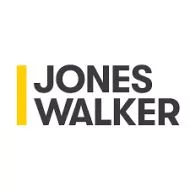- within Government, Public Sector, Litigation, Mediation & Arbitration and Law Practice Management topic(s)
- in United States
Labor & Employment Legal Trends: What Every Employer Needs to Know
As we speed toward the end of the year, the workplace continues to evolve under the weight of shifting regulations, heightened employee expectations, and greater scrutiny from regulators. For business leaders, labor and employment law is no longer a back-office issue—it is a core business concern that directly impacts operations, talent retention, and long-term growth.
At Jones Walker, our Labor & Employment Practice Group has identified several key trends shaping the employer landscape this year. The message is clear: organizations that approach compliance proactively and invest in sound workplace practices will be far better positioned to avoid costly disputes and strengthen their workforce.
Building a Strong Foundation Through Workplace Management
Workplace management is more than a human resources function—it is the foundation of a productive and legally compliant workplace. Weak or inconsistent management practices can quickly escalate into high turnover, employee dissatisfaction, litigation, and even union activity.
Employers should focus on four essentials:
- Clear, updated policies that reflect current laws and company values
- Careful hiring and onboarding to set expectations from day one
- Prompt handling of complaints to address issues before they escalate
- Fair performance management and discipline that builds trust and reduces risk
Training supervisors to implement these practices consistently is critical. As trusted advisors, we regularly help companies design policies, run training programs, and build frameworks that both protect the business and enhance employee morale.
Accommodation and Leave: The Compliance Balancing Act
Employers are facing an increasingly complex web of accommodation and leave requirements. Federal obligations under the Americans with Disabilities Act (ADA) and the Family and Medical Leave Act (FMLA) are only part of the picture. Many state laws impose stricter standards, and remote work often means employees are subject to multiple jurisdictions.
Key pressure points include:
- Recognizing and responding appropriately to ADA accommodation requests
- Managing pregnancy-related accommodations in line with new requirements
- Understanding how state leave laws may overlap—or conflict—with federal law
- Staying ahead of evolving FMLA interpretations around eligibility, holidays, and workday limits
Getting these issues wrong can expose employers to litigation and reputational harm. Getting them right can build loyalty, reduce attrition, and demonstrate a company's commitment to fairness.
Workplace Safety: A Renewed Focus
The Occupational Safety and Health Administration (OSHA) enforcement remains active and unforgiving. A single lapse in recordkeeping, training, or compliance can result in fines, reputational damage, and, most importantly, harm to employees.
Employers should prioritize preventive safety management by:
- Keeping OSHA logs accurate and up to date
- Conducting internal safety audits before regulators arrive
- Updating safety manuals and training programs
- Preparing leadership for how to respond during inspections
A strong safety culture is not just a regulatory requirement—it is also a competitive advantage in attracting and retaining talent.
Employee Benefits: Avoiding Costly Oversights
Finally, benefits administration continues to be a high-risk area. Missteps in the Consolidated Omnibus Budget Reconciliation Act (COBRA) notices, 401(k) calculations, mental health parity compliance, or investment oversight can trigger lawsuits, penalties, and class actions.
Employers should regularly audit benefit plans, confirm compliance with both federal and state laws, and adopt prudent fiduciary processes for retirement plans. Our team often works side by side with clients to spot issues early and create solutions that withstand regulatory and legal scrutiny.
The Bottom Line for Employers
The common thread across these trends is simple: proactive management is far less costly than reactive damage control. Whether through policies, training, audits, or benefit reviews, employers that invest in compliance today are protecting themselves—and their employees— tomorrow.
The content of this article is intended to provide a general guide to the subject matter. Specialist advice should be sought about your specific circumstances.





